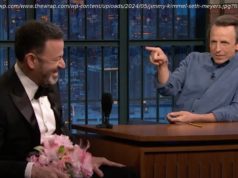It’s usually more effective to run for something rather than against someone.
As noted in my previous post, my home state of Virginia highlighted a bad night for Democrats. Glenn Youngkin won the governor’s race and Winsome Sears and Jason Miyares will be lieutenant governor and attorney general, respectively. In addition to holding elections for state offices in odd-numbered years, which surely depresses turnout, the Commonwealth clings to the archaic practice of limiting the governor to a single, consecutive four-year term. Democrat Terry McAuliffe won in 2013, facing a Republican so repugnant even the right-wing Richmond Times-Dispatch couldn’t endorse, he won in an election I sat out. He ran essentially unopposed for the Democratic nomination again, seeking to be the first to win a second term in decades. This time, I held my nose and voted for him. While he easily won the Northern Virginia suburbs where I live, he didn’t fare well in most of the state. But, using NYT graphics, here’s the shift from last November’s Presidential vote: There’s literally not a blue arrow on this map: Youngkin outperformed Trump and McAuliffe underperformed Biden across the state. As noted in my previous post, I blame this partly on the depressed turnout inherent in holding this contest so soon after a Presidential race. A million fewer people voted in this contest compared to that one, despite 45 days to do so. But there’s more to it. McAuliffe is just a lousy candidate. He came in third in the 2009 primaries against a terrible field and won in 2013 and 2021 essentially by default. And he ran a lousy campaign, trying to convince Virginians to cast another vote against Donald Trump rather than to give him another four years in the governor’s mansion. WaPo (“ Republican Glenn Youngkin wins Virginia governor’s race “): McAuliffe worked relentlessly to tie Youngkin to the unpopular Trump and warned that Virginia’s recent record of Democratic policy changes — from safeguarding abortion and voting rights to expanding access to health care — could be at risk if Youngkin won. He also accused the Republican of fanning the flames of racism and brought former president Barack Obama, Vice President Harris and voting rights activist Stacey Abrams to Virginia to try to build enthusiasm among Black voters, a crucial Democratic constituency. It was unclear how well the push panned out, though Democrats’ efforts to establish expansive early-voting access helped result in good turnout at the polls. Christopher E. Piper, the commissioner of the state’s elections department, said turnout was higher than expected in some localities, forcing some precincts to rely on supplemental ballots after they ran out of normal ones. “We saw pretty high turnout in some of these areas,” he said. “The good news is, there are procedures in place to ensure that voters can get ballots and that they can get ballots to the precincts in a timely manner so that voting can go on unimpeded.” About 1.2 million Virginians cast their ballots in person or by mail between Sept.17 and Oct.30, only the second year the state has allowed no-excuse absentee voting for such an extended period. Preliminary exit polling estimated turnout at 53.3 percent, smashing the 47 percent mark set in 2017. The governor’s race also broke records for fundraising in Virginia, with the two major-party candidates raising roughly $115 million combined, according to the nonpartisan Virginia Public Access Project. While Republicans hadn’t won statewide in Virginia since 2009, the state also has a record of electing a governor from the opposite party of whoever is in the White House — broken only once in the past 40 years, by McAuliffe in 2013. While he was too Trumpist for my tastes, Youngkin seems to have figured out how to keep the MAGA folks in the coalition while not scaring off moderate suburbanites. NYT (“ Glenn Youngkin’s Journey From the Heights of Finance to the Top Tier of G.O.P. Politics “): One year ago, Glenn Youngkin was well known in the world of high finance, but almost a complete cipher in politics. After a remarkable upset in the race for governor of Virginia, Mr. Youngkin is the newest star of the Republican Party, whose campaign will be reverse-engineered for its lessons by both parties, and whose political future may hardly be limited to four years in the cream-colored Executive Mansion in Richmond. A natural campaigner running his first race, Mr. Youngkin found a way to enlist both the Republican base still in thrall to Donald J. Trump and less ideological Republicans who rejected the party in the Trump era. Furious Democratic attacks that he was a Trumpian wolf in suburban-dad fleece never quite stuck because, in both biography and manner, Mr. Youngkin did not fit the former president’s bullying, self-aggrandizing profile. His ability to direct multiple messages — red meat to the G.O.P. base via interviews with right-wing media, and a less divisive pitch to swing voters, including on parental input for schools — will serve as a blueprint for his party in the midterms. With a personal fortune estimated by Forbes at $440 million, Mr. Youngkin contributed $20 million to his own bid. That lavish sum paid for top-tier G.O.P. consultants and an avalanche of TV ads, and it prompted speculation that Mr. Youngkin’s sights were set beyond Virginia, where governors must step down after a single term. His victory running as a conservative in a seemingly Democratic redoubt — no Republican had won statewide in Virginia in a dozen years — could make Mr. Youngkin,54, a contender within his party nationally if its voters decide they are ready to move on from Mr. Trump and Trumpism. During the campaign, Mr. Youngkin blanketed the airwaves with ads attacking his Democratic opponent, former Gov. Terry McAuliffe. But at the outset, the ads introduced the political unknown as someone from modest means, whose father lost a job, forcing a teenage Glenn to find work washing dishes. The family moved to Virginia Beach, where he attended a private day school, Norfolk Academy. A basketball scholarship earned him a ride to Rice University in Houston, a Division I program where he mostly warmed the bench and was listed as 6 feet 7 inches (he now puts his height at 6-foot-5). He later attended Harvard Business School. His career followed the well-trod path of former varsity athletes from elite private colleges who head into finance. […] In the crowded Republican primary field, with most candidates vying for a Trump base that largely believed the falsehood that the 2020 election was stolen because of fraud, Mr. Youngkin made “election integrity” his top issue. He acknowledged only after securing the nomination in May that President Biden had won. Mr. Trump’s endorsement, which came soon after, was “an honor,” Mr. Youngkin said. Mr. Trump at one point called him “a great gentleman” and offered to campaign together. But Mr. Youngkin dodged rallies at which Mr. Trump phoned in his support, while the former president continued to fan election conspiracy theories. Glossing lightly over his own policy priorities during the early part of the race, Mr. Youngkin soft-pedaled traditional conservative issues like gun rights and abortion, at one point confiding to a liberal activist with a hidden mic that he had to downplay abortion to court independent voters. The National Rifle Association skipped an endorsement in July after Mr.






